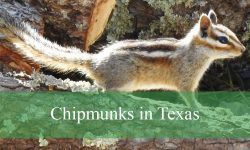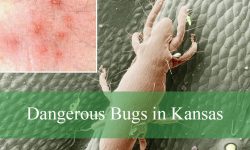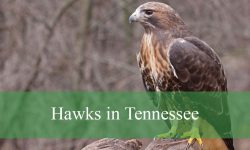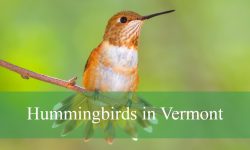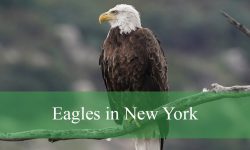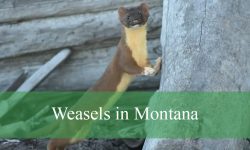Alabama is home to several fascinating quail species, offering birdwatchers an opportunity to spot these elusive, ground-dwelling birds. Quail are admired for their unique calls, intricate plumage patterns, and secretive habits. Observing quail in their natural habitats can be a rewarding experience for both novice and experienced birders.
Quail in Alabama inhabit a variety of landscapes, from pine forests to open fields and agricultural areas. Their small size and swift movements often make them challenging to spot, but with careful observation, you can identify their distinctive markings and calls.
These birds play an important role in the ecosystem by controlling insect populations and serving as prey for larger predators. Understanding the types of quail in Alabama can enrich your birdwatching adventures and contribute to conservation awareness.
Northern Bobwhite (Colinus virginianus)
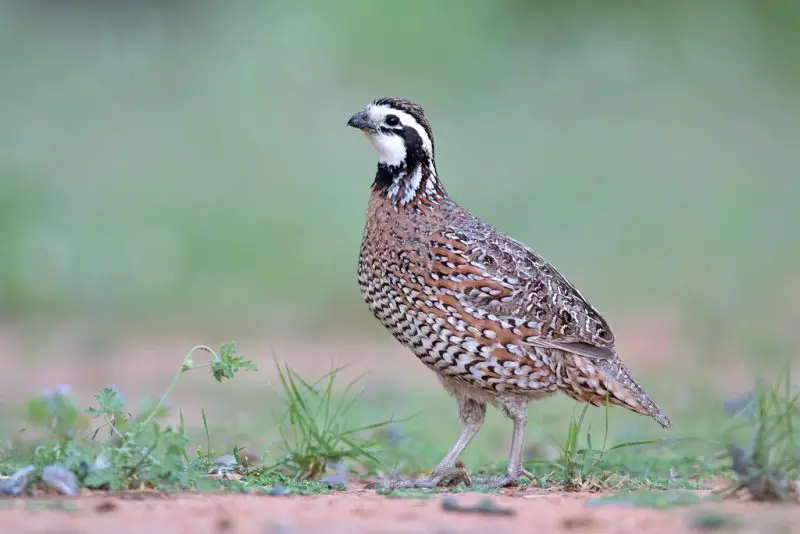
Identification and Physical Characteristics
The Northern Bobwhite is a small, plump quail, typically measuring 7 to 9 inches (18–23 cm) in length with a wingspan of 12–14 inches (30–36 cm) and weighing around 5–6 ounces (140–170 grams). Males are easily distinguished by their striking white throat and eyebrow, which sharply contrasts with a dark brown face and crown. Females lack the bold white markings and instead have a buff-colored throat and eye stripe, making them appear more subdued.
The body plumage in both sexes is a mix of mottled brown, black, chestnut, and white, giving excellent camouflage against leaf litter, grasses, and brush. Their rounded wings and short tail allow them to make quick, explosive flights when startled, typically covering only short distances before landing back in cover. Juveniles resemble females, though their markings are fuzzier and less defined.
Habitat and Behavior
Northern Bobwhites are ground-dwelling birds that thrive in a mosaic of habitats combining open fields, grassy meadows, forest edges, and brushy hedgerows. They are social birds, forming coveys of 10–30 individuals, which provide protection against predators. Covey members communicate through soft clucks and calls to stay in contact while foraging.
These quail are most active during early morning and late afternoon, feeding and moving quietly through vegetation. During the hottest part of the day, they often take shelter in dense cover or under shrubs to avoid heat stress and predation. They are non-migratory, maintaining territories year-round but shifting location slightly based on food availability and seasonal vegetation changes.
Feeding and Diet
Northern Bobwhites are omnivorous, primarily feeding on seeds, grains, berries, and various insects. Seeds of grasses and legumes dominate their diet, while insects, especially beetles, grasshoppers, and caterpillars, become crucial during spring and summer breeding seasons, providing protein for growth and egg production. Quail forage by scratching leaf litter and soil with their feet, revealing hidden seeds and insects.
Predators and Defense
Predators include hawks, owls, snakes, foxes, raccoons, and domestic cats. Bobwhites rely on their cryptic plumage, quick dashes to cover, and dense vegetation to evade threats. When flushed, they often fly in short, low bursts to nearby brush or tall grass, a behavior known as “explosive flight”, which can startle predators. Covey members may call to each other during flight, keeping the group cohesive.
Reproduction and Nesting
Northern Bobwhites breed from April through September, producing one to three broods per year, depending on food availability and habitat conditions. Nests are shallow depressions on the ground, often hidden under grass clumps, shrubs, or low vegetation, lined with leaves and grass. Females lay 10–15 creamy white eggs speckled with brown, incubated for 23–24 days. Chicks are precocial, leaving the nest within hours of hatching to follow parents in search of seeds and insects.
Best Time and Places to Observe
The best times to observe Northern Bobwhites are early mornings or late afternoons, particularly in grassy fields, woodland edges, farmlands, and brushy roadsides across central and southern Alabama. Their distinctive “bob-WHITE” whistle is often the easiest way to locate them before visually spotting the birds. Observing quietly and using binoculars increases the chances of seeing their foraging behavior or covey interactions.
Scaled Quail (Callipepla squamata)
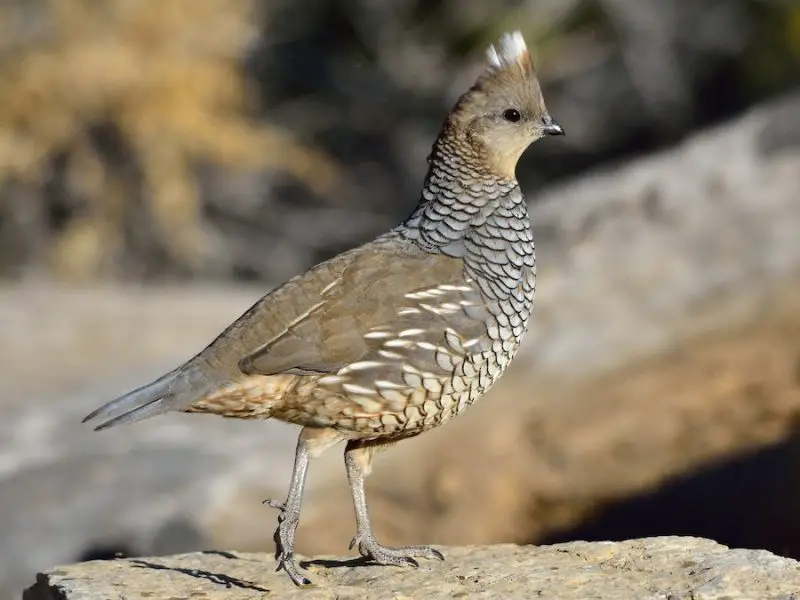
Identification and Physical Characteristics
The Scaled Quail is a medium-sized quail, typically measuring 9 to 11 inches (23–28 cm) in length with a wingspan of 13–15 inches (33–38 cm) and weighing around 6–8 ounces (170–225 grams). Its most distinguishing feature is the scaled appearance of its chest and belly feathers, where each feather is edged with a pale margin, giving the bird an armored look.
They possess a prominent head crest, grayish-brown plumage, and pale facial markings that contrast subtly with the darker tones of the body. The wings and tail exhibit faint barring, allowing the bird to blend seamlessly with dry grasses and scrubby vegetation. Males and females appear similar, though females are slightly duller with less pronounced facial markings. Juveniles are smaller with fuzzier, less-defined scaling patterns, making them harder to identify at a glance.
Habitat and Behavior
Scaled Quail prefer arid, open landscapes such as grasslands, scrublands, and lightly vegetated farmland. They are ground-dwelling birds, rarely flying except when startled, and are often seen in small coveys of 6–15 individuals. Unlike Northern Bobwhites, they are more cautious and secretive, often retreating quickly to dense cover when sensing danger.
These quail are most active in early morning and late afternoon, spending the hottest part of the day in shaded areas or under low shrubs. They communicate with soft, whistling calls, which are quieter than the Northern Bobwhite’s loud whistle, making them more difficult to locate in the wild.
Feeding and Diet
Scaled Quail are omnivorous, feeding primarily on seeds of grasses, weeds, and crops, supplemented by insects such as beetles, grasshoppers, and caterpillars. Seeds provide the bulk of their diet year-round, while insects become especially important during the breeding season to supply protein for egg development and chick growth. They forage by scratching and pecking the ground, moving slowly and methodically to uncover hidden seeds and insects.
Predators and Defense
Predators include hawks, owls, snakes, coyotes, foxes, and domestic cats. Scaled Quail rely heavily on camouflage, cautious behavior, and rapid short-distance flight to evade threats. When disturbed, they typically scatter to nearby brush or grass, using a combination of running and low flight to avoid capture. Covey members may regroup after being flushed, with soft calls helping maintain group cohesion.
Reproduction and Nesting
Breeding usually occurs from March through August, with one to two broods per year, depending on habitat quality and food availability. Nests are shallow depressions on the ground, lined with grass, leaves, and twigs, typically hidden under shrubs or low vegetation. Females lay 10–12 eggs, which are pale brown with speckles, incubated for 21–23 days. Chicks are precocial and follow the adults almost immediately after hatching, foraging for seeds and insects while remaining well-hidden in cover.
Best Time and Places to Observe
The best times to observe Scaled Quail are early morning and late afternoon, particularly in northern and western Alabama where open scrublands or lightly vegetated fields exist. Because they are shy and elusive, listening for their soft, whistling calls is often the most effective way to locate them. Observers should move slowly, stay downwind, and watch for sudden movement in low vegetation to catch glimpses of these secretive birds.
Bobwhite-Scaled Hybrid (Occasional Sightings)
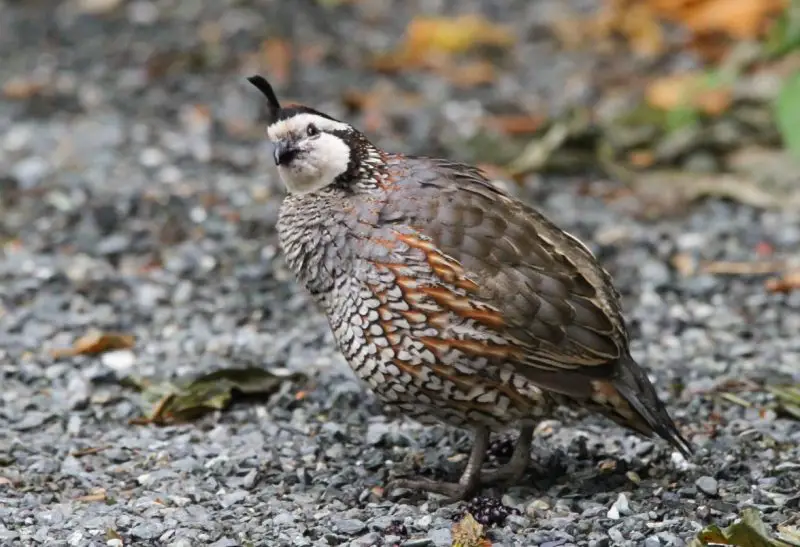
Identification and Physical Characteristics
Bobwhite-Scaled Hybrids are quail that exhibit a blend of traits from both Northern Bobwhite (Colinus virginianus) and Scaled Quail (Callipepla squamata). These hybrids are typically 7–11 inches (18–28 cm) in length with a wingspan ranging from 12–15 inches (30–38 cm) and weight between 5–8 ounces (140–225 grams), depending on which parent species they most resemble.
The plumage is highly variable. Many hybrids display mottled brown, black, and chestnut feathers, combined with partial scaled patterns on the chest or belly, creating a patchwork effect. Facial markings can range from the white throat and eyebrow of a Bobwhite male to the pale facial streaks typical of Scaled Quail, or an intermediate blend. Crests may be prominent or minimal, depending on inherited traits. Juveniles are even harder to identify, showing subtle combinations of both species’ characteristics.
Habitat and Behavior
Hybrids are usually found in transitional habitats where the ranges of Northern Bobwhite and Scaled Quail overlap, such as the edges of forests, grassy fields, and open scrublands. Like their parent species, they are ground-dwellers and forage in small groups, but coveys are often smaller, typically 5–20 birds.
Behaviorally, hybrids combine traits from both species. They are cautious and alert, relying on dense cover to evade predators. When flushed, they may exhibit short explosive flights like Bobwhites or skulk quickly into low brush like Scaled Quail. Their vocalizations can vary, sometimes producing the Bobwhite’s loud “bob-WHITE” whistle, other times softer whistling calls reminiscent of Scaled Quail.
Feeding and Diet
Bobwhite-Scaled Hybrids are omnivorous, feeding on a mix of seeds, grains, berries, and insects. Their foraging technique combines scratching the leaf litter for seeds (like Bobwhites) with slow pecking and probing in arid areas (like Scaled Quail). Insects are particularly important during the breeding season, providing essential protein for chick growth.
Predators and Defense
Predators include hawks, owls, foxes, snakes, raccoons, and domestic cats. Hybrids rely on camouflage, cautious movement, and dense vegetation to avoid detection. When threatened, they may scatter in multiple directions, using a combination of running and short bursts of flight. Smaller covey sizes make hybrids more vulnerable to predation than larger Northern Bobwhite groups.
Reproduction and Nesting
Breeding occurs mainly from April through August, similar to both parent species. Nests are shallow depressions on the ground, lined with grass and leaves and hidden under low shrubs or vegetation. Clutch sizes are typically 8–12 eggs, and incubation lasts about 22–24 days. Chicks are precocial, leaving the nest within hours to follow adults and forage while remaining concealed in cover. Hybrid offspring may vary in appearance, even within the same covey, depending on the degree of genetic mixing.
Best Time and Places to Observe
Hybrid sightings are rare and require patience and careful observation. The best times to find them are early morning and late afternoon, particularly in central Alabama where habitats of Northern Bobwhite and Scaled Quail intersect. Observers should use binoculars and watch for movements in transitional habitats, listening for a mix of vocalizations that may indicate hybrid individuals.
FAQs About Quail in Alabama
What species of quail are found in Alabama?
Alabama is home to Northern Bobwhite (Colinus virginianus), Scaled Quail (Callipepla squamata), and rare Bobwhite-Scaled Hybrids. Northern Bobwhites are the most common, while Scaled Quail are more localized in the northern and western parts of the state. Hybrids are occasional and found in overlapping habitats.
How can I tell a Northern Bobwhite from a Scaled Quail?
Northern Bobwhites have a white throat and eyebrow in males and mottled brown body plumage. Scaled Quail show scaled chest and belly feathers, a grayish-brown body, and a prominent head crest. Facial markings and the type of vocalizations are often the easiest clues for identification.
Where and when is the best time to observe quail in Alabama?
The best times to observe quail are early morning and late afternoon, when they are most active in foraging. Northern Bobwhites are often seen in grassy fields, woodland edges, and farmland, Scaled Quail prefer open scrublands and arid areas, and hybrids are found in transitional habitats between the two.
What do quail eat?
Quail are omnivorous, feeding primarily on seeds, grains, berries, and insects. Seeds make up the bulk of their diet, while insects become especially important during the breeding season to support chick growth.
Are quail migratory in Alabama?
No, quail are resident birds and generally remain in their home range throughout the year. Seasonal movements are limited and usually related to food availability or cover.
How do quail avoid predators?
Quail use camouflage, dense cover, and short explosive flights to escape predators such as hawks, owls, foxes, and snakes. Covey behavior, where birds stick together, provides additional protection, although hybrid quail in smaller groups may be more vulnerable.
How do quail reproduce?
Quail nest on the ground in shallow depressions lined with leaves and grass. Northern Bobwhites and hybrids lay 8–15 eggs, while Scaled Quail typically lay 10–12 eggs per clutch. Chicks are precocial, leaving the nest shortly after hatching and following adults to forage. Breeding usually occurs from spring through late summer.
Can hybrids be identified easily?
Hybrid Bobwhite-Scaled Quail are difficult to identify, as plumage varies widely. They may show mixed facial markings, mottled or partially scaled chest feathers, and intermediate crests, so careful observation and comparison with pure species are necessary.

